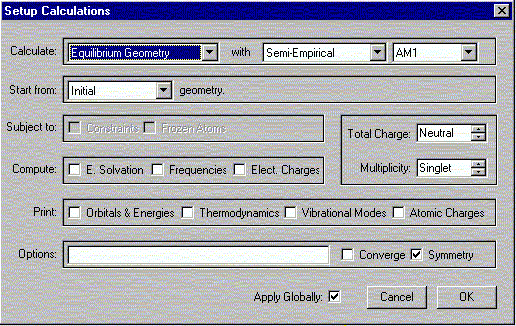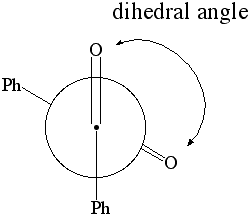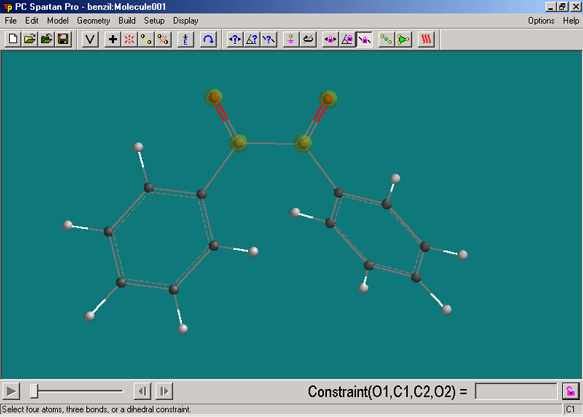1. A student acquires a GC spectrum for his final product from the reduction reaction.
Solvent: dichloromethane, column: HP-5, length = 30 m, 0.25 mm, flowrate: 1 mL/min, temperature: T(initial)= 120 oC, T(final)= 200 oC, t = 5 min
Results:
| Time (min) |
Height (pA) |
half width (min) |
Peak |
| 1.30 |
25000 |
0.25 |
A |
| 3.50 |
50 |
0.12 |
B |
| 3.55 |
200 |
0.14 |
C |
| 3.60 |
45 |
0.12 |
D |
a. Which peak belongs to which compound in the final product? How can he confirm these assignments?
b. Determine the percentage composition in terms of isoborneol and borneol in the final product .(Hint: which assumption can you make here that simplifies the calculations?)
c. How would the spectrum change if the run would be started at T(initial)=80 oC and ended at T(final)= 160 oC with the same temperature gradient?
d. How would the spectrum change if the flow rate of the carrier gas was changed to 0.5 mL/min?
e. Why is it important to introduce a small amount of the analyte into the GC? How is this accomplished?
2. Review extraction theory (Survival Kit Reader, Mohrig, etc )and then take the Online Quiz
http://bacher.chem.ucla.edu/TakeQuiz/?id=c51ce410c124a10e0db5e4b97fc2af39
In order to take the quiz, you have to go through a UCLA ICP address. This means that you either have to use your Bruin-Online account or go through the VPN (Virtual Private Network, software can be found here: http://www.bol.ucla.edu/services/vpn/) to have this UCLA ICP address.
To log in, use your last name and your student ID. If you are experiencing problems, contact the instructor via email and include your full name (indicated which one is your last name), your student ID, section and TA. (Hint: Think very careful about each response since many of the questions have more than one answer to them!) Even though you can take the quiz until one hour prior to meeting 4 of your section, you should not delay taking it since there might be some problems with the server or the login. Also, there seem to be problems with MAC systems and Safari Browser. The best is using IE 7.0 or Firefox. After you submit the answers, your score should appear on your screen. If this does not happen, you will have to retake the quiz. (There will not be any possibility to retake the quiz weeks later!). The quiz is worth 10 points.
3. Referring to the phase transfer reaction carried out in the lab, answer the following questions.
a. What is used as phase transfer catalyst in the reaction? How does the PTC work?
b. What are the two phases comprised of in this reaction?
c. Why is it important that the reaction mixture is stirred vigorously?
d. After the reaction is completed, the two layers are separated. How is this accomplished?
e. After the extraction steps are completed, the organic layer is dried. Which drying agent is used and how does the student know that he added enough drying agent?
f. The volume of the solution is reduced to about 4-5 mL prior to the column chromatography step. Explain briefly why.
g. Why is it important to use a very small cotton ball for the column?
h. After the column chromatography step, the solvent is completely removed. The remaining residue is recrystallized from 95% ethanol. What does this mean?
PART II. (Reduction of Camphor, In-lab assignment)
 this is the minimize button. Always minimize your structure before leaving the building mode.
this is the minimize button. Always minimize your structure before leaving the building mode. to enter View Mode
to enter View Mode






